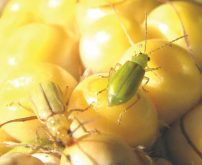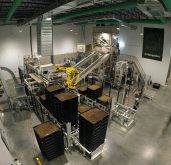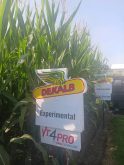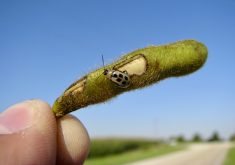Ontario farmers are facing significant soybean replanting this year, a product of variable rainfall and a surprising amount of root rot issues.
Why it matters: Reseeding parts of fields can result in stands that mature unevenly, leading to harvest challenges.
“There’s significantly more replanting or patching or thickening up across the province,” said Horst Bohner, soybean specialist with the Ontario Ministry of Agriculture, Food and Rural Affairs (OMAFRA). “It’s over a large geography, larger than we’re used to.”
Read Also
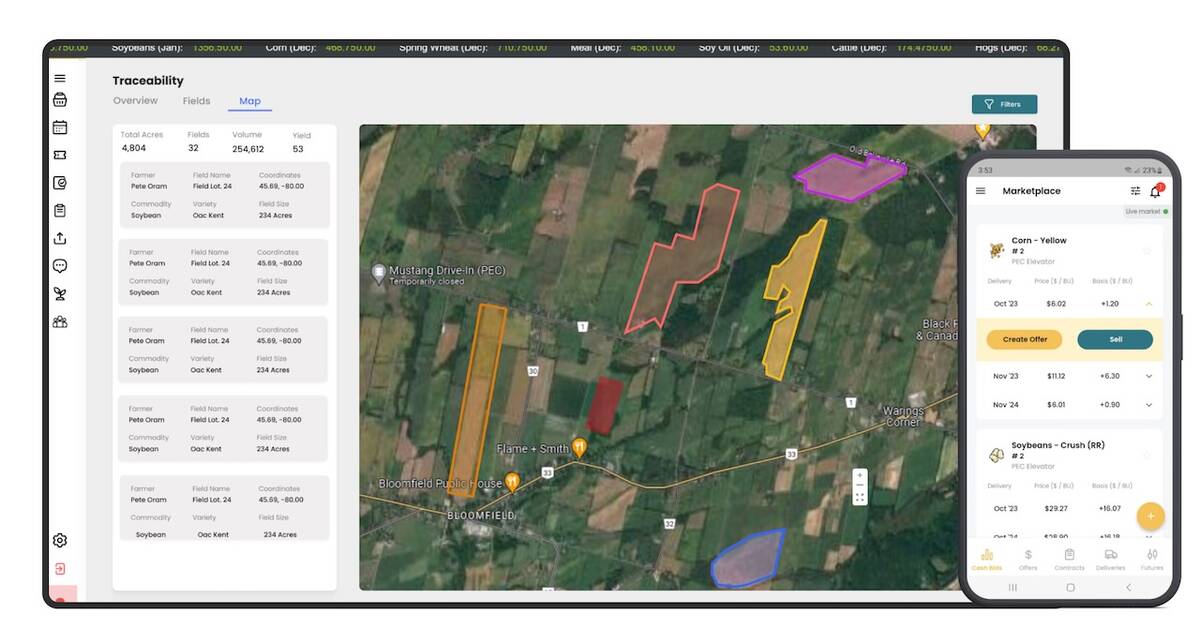
Ontario company Grain Discovery acquired by DTN
Grain Discovery, an Ontario comapny that creates software for the grain value chain, has been acquired by DTN.
The Agricorp soybean planting deadline for crop insurance is Saturday (June 30), so the official extent of replants is not yet known.
Josh Boersen, who farms north of Stratford, replanted soybeans on two different farms, the first time he’s had to do so in his farming career.
“Predominantly, it wasn’t too bad,” he said. “But there were a couple of farms where we were concerned mostly with the headlands.”
He said the issue is predominantly seedling vigour. On one farm, the laboratory confirmed they had phytophthora root rot in the field. That was surprising, he said, because they were growing the soybeans as foundation seed for a seed company and they had full fungicide seed treatment.
The field with confirmed phytophthora root rot was completely reseeded with soybeans planted at a 15-degree angle to the original crop.
On the other farm, the problem was in the headlands. In one field, Boersen left the original crop to see how it will yield without replanting and in the other he planted new seed between the 15-inch rows.
Boersen said they planted one of the farms about 2.5 inches deeper because it was drier and that may have affected emergence.
“It’s not been a fun spring getting seed out of the ground,” said Bohner.The range of replanted soybeans Bohner heard about stretched from Essex County in the south to the Ottawa area in the east.
However, not all areas have been affected. Some soybeans look fantastic, said Bohner, especially beans planted in 15-inch rows.
“Some of these bean crops look tremendous. They’ll reach five trifoliates before starting flowering, which is perfect.”
Deb Campbell, owner of Agronomy Advantage in Dundalk, said they’ve had much lower soybean replanting issues than last year, when a very wet spring and torrential rains in her area caused more soybeans to be replanted.
In her area, seed corn maggot and high residue fields have caused concerns and slowed emergence of some soybeans, but most fields stayed above the 100,000 plants per acre she likes to see before any replanting is considered.
“At the end of the day, there were very few stands below 100,000 that needed replanting. There are a lot more stands at that 120,000 that we’d like to see at 140,000,” she said.
Bohner said that thinner stands don’t always result in yield loss, as soybeans have a great ability to fill in space, grow larger and put on more pods. That’s why there’s still debate over the planting of soybeans at 7.5-inch row spacing versus 15-inch row spacing. However, uneven stands won’t all mature the same and that can result in harvest challenges.
July and August growing conditions make all the difference in soybean yield.
“A plant with space will branch and contribute to yield. However, growing conditions are more important when you have a thin stand,” said Bohner.
Drier conditions early in the season, as have been widespread in Ontario over the past month, could be better for soybeans because they force plants to put down larger root systems and lower the risk of leaf diseases.
There’s still potential for a great soybean crop in Ontario, but for some farmers, the soybeans just didn’t get up and go, meaning an increased investment in time, seed and inputs.
“I’ve never seen it like this before,” said Boersen. “It’s rare beans won’t come out of black muck.”





